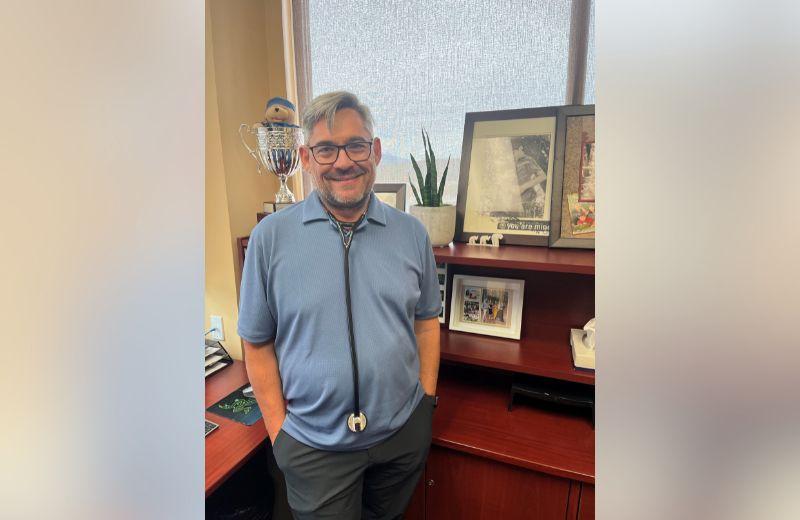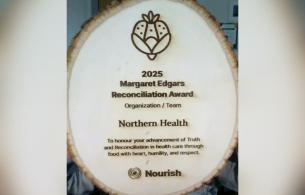Meet Dr. Jacobus Strydom, a family doctor in Terrace, BC, with a passion for maternity care. I recently talked with him about a technique called prenatal hand expression.
Dr. Strydom learned about this from another doctor, Dr. Prollius, an obstetrician-gynecologist who spent some time in Terrace. Now he talks about it with his clients at their 32-week prenatal visits and checks in about it again at later visits.
He tells his clients about the More Milk Sooner website, which provides helpful info and videos. Usually, clients with low-risk pregnancies can start hand expression at around 36 weeks. The key thing is for clients to practice this skill, even if they can’t collect any of the first milk (colostrum).
Why is prenatal hand expression helpful?
For many, it can make breastfeeding easier. But that’s not all. The breast and nipple stimulation resulting from hand expression releases a hormone called oxytocin, which might help reduce the need to induce labour in some cases. This is especially helpful for pregnant clients with certain risk factors, such as:
- Over 35 years old
- Diabetes or gestational diabetes
- High blood pressure
That said, it's not for everyone. There are some situations when expressing milk in pregnancy is not advised. Providers and clients should discuss this option together.
What do clients and colleagues think?

It’s not just Dr. Strydom who’s on board with prenatal hand expression. Local midwives, obstetricians, and other colleagues at the Terrace prenatal clinic also recommend it (as do physicians in Prince George, such as Dr. Christine Brenckmann).
In fact, Perinatal Services BC advises that care providers should “discuss antenatal hand expression routinely” in the third trimester (see Lactation and newborn feeding support – third trimester).
Dr. Strydom says that clients have shared positive feedback, noting that it has helped to get breastfeeding off to a good start. Nurses who help during birth, and afterwards, have also shared how helpful this practice is. Clients who’ve already learned hand expression need less coaching on breastfeeding after birth, which is a great help in a busy time.
Dr. Strydom told me about one pregnant mom who brought five tiny syringes of frozen colostrum to the hospital. She felt comfort in having it on hand just in case her baby needed it after birth.
What’s next?
Dr. Strydom wants more people to know about prenatal hand expression, and he’d like to share this info with more family doctors. Even though they don’t often see clients later in pregnancy, they could share this information earlier.
That way, expectant parents would hear about it a few times, and they might be more likely to practice hand expression before the end of their pregnancies.
Dr. Strydom is also thinking about sharing this information in clinic and hospital spaces by way of posters, handouts, and colostrum collection kits like the one shown above. He’s interested to know how many pregnant clients are practicing prenatal hand expression, and what they think of it.
“We know that it makes a difference, yet at the moment we don’t have an easy way to measure the impact,” he says. “This could be a potential quality improvement project.”
Curious about prenatal hand expression?
- Hand expression in pregnancy: Instructions for patients - More Milk Sooner
- "More Milk Sooner": Dr. Brenckmann promotes hand expression of milk in low-risk pregnancies - Northern Health Stories














Comments